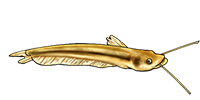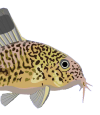Hi there,
I'm new to this forum and have some questions regarding care of a couple of Acanthadoras spinossimmus (sp.) that I will be adopting.
My setup is going to be a soft-ish water, unlit tank with plenty of bogwood and maybe only one other inhabitant. Which is one of my questions actually :
Would they be ok living with a black ghost knife? Other suggestions?
I've heard they are capable of producing a venomous fluid when they 'lock' their fins, is this cause for concern? (in terms of personal safety)
Does green matter feature in their diet?
Do these little guys become 'tame' easily? ie hand-feeding...
That's about it, i think. Any other tips are most welcome! Thanx in advance,
Sam
Acanthadoras care
-
Sammyp
- Posts: 2
- Joined: 14 Oct 2006, 13:46
- Location 1: uk
- Interests: kung fu, tarantula's, travel, writing etc..
Acanthadoras care
Tarantula-wrangler.
- sidguppy
- Posts: 3827
- Joined: 18 Jan 2004, 12:26
- My articles: 1
- My images: 28
- My aquaria list: 5 (i:0)
- Spotted: 9
- Location 1: Southern Netherlands near Belgium
- Location 2: Noord Brabant, Netherlands
- Interests: African catfishes and oddballs, Madagascar cichlids; stoner doom and heavy rock; old school choppers and riding them, fantasy novels, travelling and diving in the tropics and all things nature.
- Contact:
They can join with any Ghostknife, no worries.
they eat anything, but animalfood is better than veggie food. mosquitolarvae and chopped up earthworms are exclusive food, but they do fine on flake or presoaked granules as well (presoak because they're gluttons and do not overfeed with granular food!). they're easy on the food.
handfeeding them might be a difficult trick, this is a very nocturnal fish and if you open the hood they're gone right away. nightfeedings?
don't be concerned about the poison, this is very rare. but watch out: they're very spiny (name!) and they WILL catch your fingers between serrated pectoral spine and spiny armour; they squeeze quite hard! a punctured skin is not unusual, best don't handle them at all.
other suggestions of fish; they co-exist easily with the more easygoing plecs and L numbers, any characin larger than a Neon, small cichlids, barbs, mediumsized livebearers, Hoplo's, Cory's; any other fish that isn't too nasty to pick on them or isn'too small. very tough fish, easy to keep.
dithers are a good idea to add (free swimming fish) this way you see the cats more often. a catfish-only tank with Doradids can be pretty boring to watch because all the fish hide all the time
they eat anything, but animalfood is better than veggie food. mosquitolarvae and chopped up earthworms are exclusive food, but they do fine on flake or presoaked granules as well (presoak because they're gluttons and do not overfeed with granular food!). they're easy on the food.
handfeeding them might be a difficult trick, this is a very nocturnal fish and if you open the hood they're gone right away. nightfeedings?
don't be concerned about the poison, this is very rare. but watch out: they're very spiny (name!) and they WILL catch your fingers between serrated pectoral spine and spiny armour; they squeeze quite hard! a punctured skin is not unusual, best don't handle them at all.
other suggestions of fish; they co-exist easily with the more easygoing plecs and L numbers, any characin larger than a Neon, small cichlids, barbs, mediumsized livebearers, Hoplo's, Cory's; any other fish that isn't too nasty to pick on them or isn'too small. very tough fish, easy to keep.
dithers are a good idea to add (free swimming fish) this way you see the cats more often. a catfish-only tank with Doradids can be pretty boring to watch because all the fish hide all the time
Valar Morghulis




